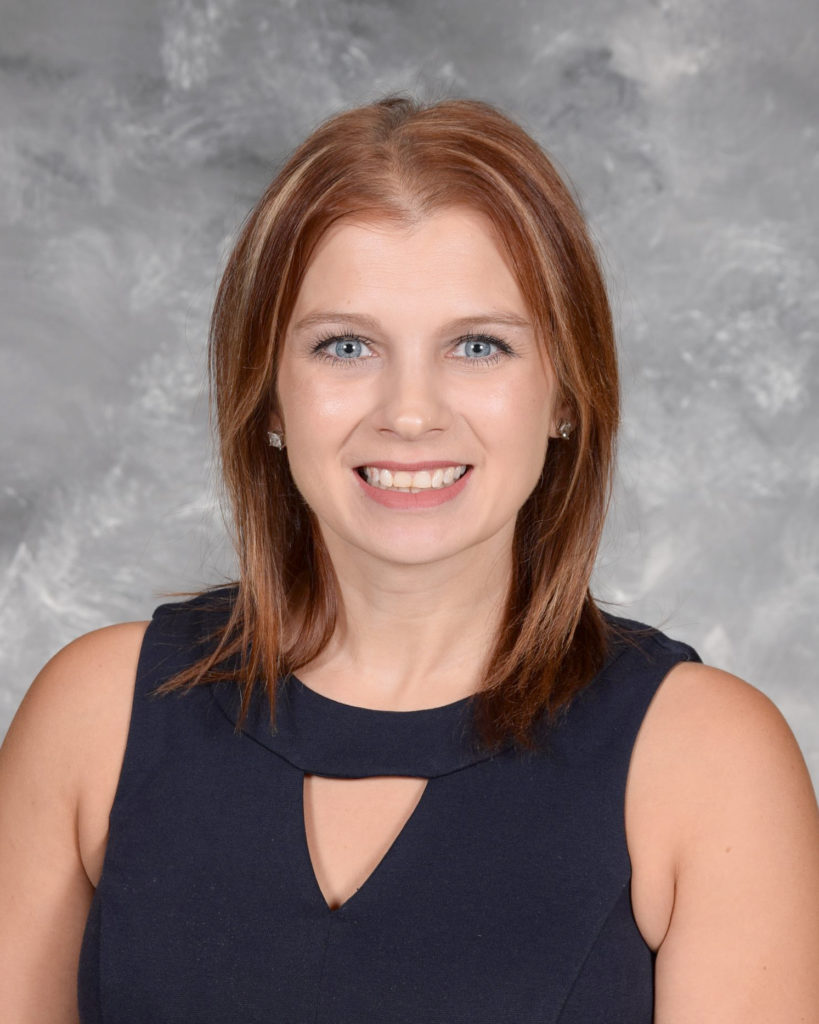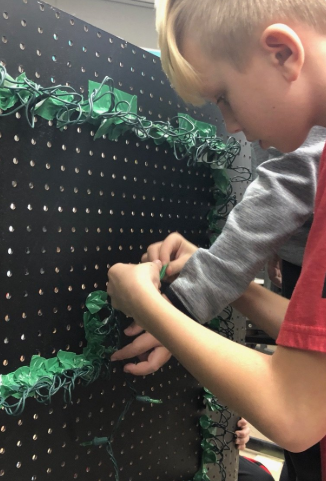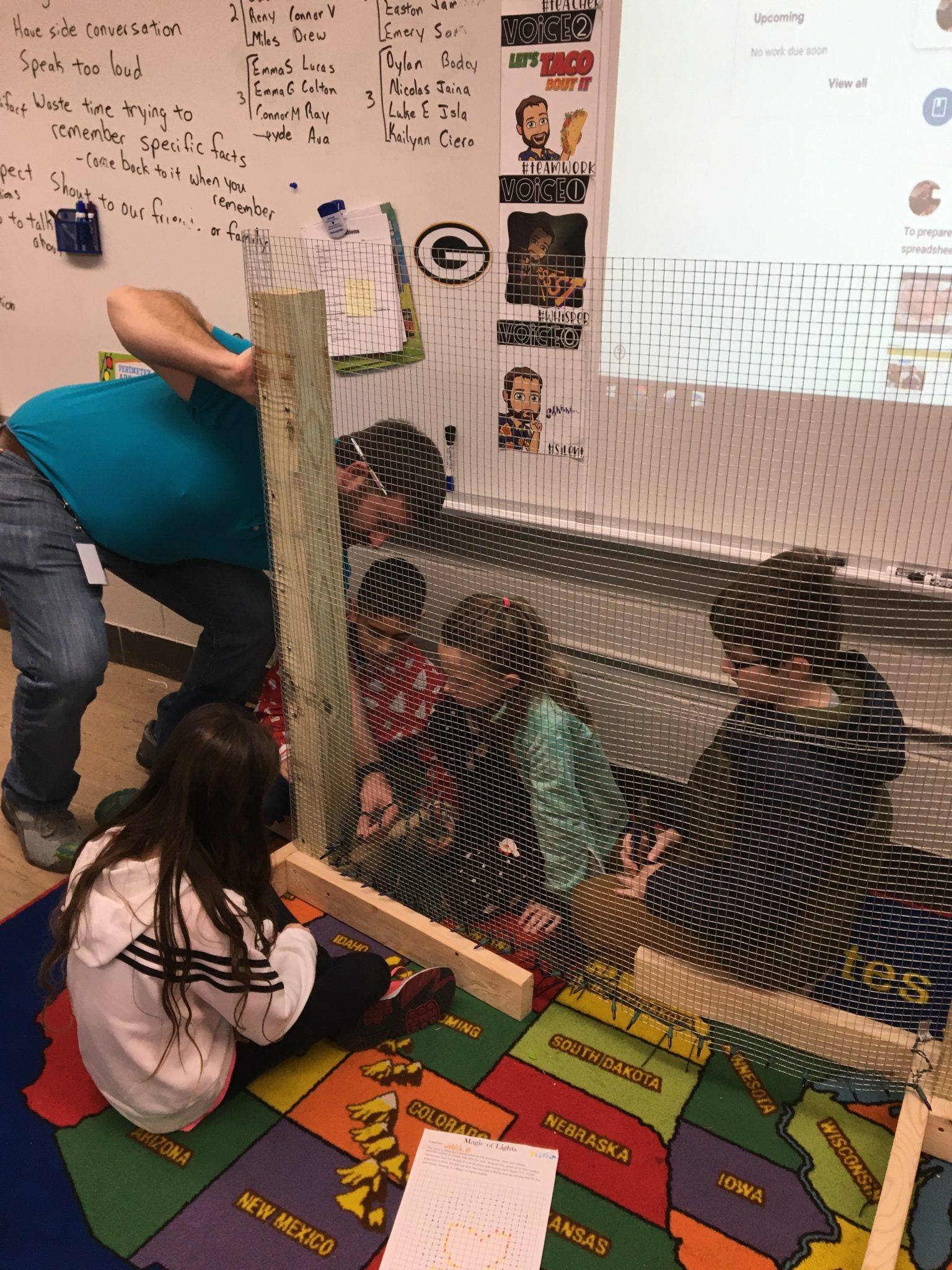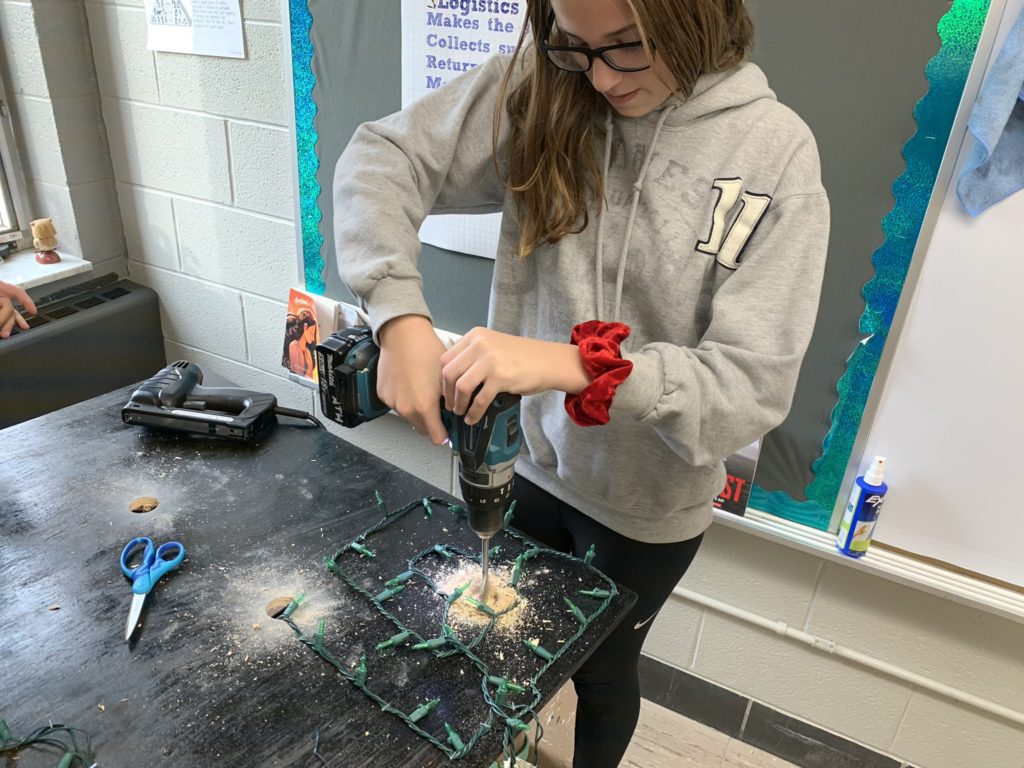Colorful, twinkling lights of the holiday season can inspire awe and wonder in adults and children alike. But in northeastern Ohio, kids of elementary and high school age have created light displays for an annual drive-through show that draws tens of thousands of visitors and raises money for local charities. Magic of Lights, held from late November through early January, is billed as the region’s largest holiday light attraction. Using the latest LED technology and digital animation, the event includes more than 1 million lights stretched along a one-mile-plus path in the Cuyahoga County Fairgrounds. At the midway point, visitors can stop at a Holiday Village, with activities and snacks available.
Helping to make all this possible are students at Ranger High-Tech Academy of North Ridgeville City Schools. With assistance from the academy’s staff members, its business partners and the school’s specialized equipment, the students plan and construct some of the sparkling and intricate displays enjoyed by the thousands viewing Magic of Lights. Melissa Durkin, North Ridgeville City Schools STEM coordinator and Ranger High-Tech Academy principal, agreed to share with us how the student part of the attraction is accomplished:
Q: Tell us about the Ranger High-Tech Academy (RHTA) and your dual roles as principal there and school district STEM coordinator.

A: RHTA is in its third year of operation. We opened with 94 learners in grades 4-7 and now have 300 learners in grades 2-9. Each year we will expand to include an additional grade level until we have kids in grades 2-12.
Through my role in the North Ridgeville City School District, I have been able to support the implementation of quality STEM education within the district and throughout northeastern Ohio.
Q: Describe the light display involved.
A: The Magic of Lights started in North Ridgeville at Victory Park Ohio and moved to the Cuyahoga County Fairgrounds in Middleburg Heights last year. It draws about 17,000 cars and approximately 70,000 to 80,000 visitors each year.
Q: How did your students become involved?
A: We originally became involved three years ago when the Magic of Lights event was held at Victory Park. Victory Park (a sports and entertainment facility) and Pepco (Professional Electrical Products Company) are two of our school’s business partners. It is always our goal to collaborate with partners and provide the learners authentic opportunities for public products. The event has expanded, and it was moved to the Cuyahoga County Fairgrounds. Now our school’s choir and band perform at the Holiday Village one evening as well during the lights event. This year, we performed on Dec. 16.
Q: What is your students’ role in the lights display? How is their participation funded?
 A: Each grade level, 3-9, creates a display. The learners work in teams, using the design process, researching and planning their displays. Then each grade level selects one design to create.
A: Each grade level, 3-9, creates a display. The learners work in teams, using the design process, researching and planning their displays. Then each grade level selects one design to create.
Some materials that have been used for displays include wood, PVC pipe, acrylic, chicken wire, pegboard and, of course, lights. The learners do all of the work, from the planning through the construction. They use our fabrication machines (laser cutter and CNC Shark, which is a computer-controlled cutting machine) in some designs and power tools in others. Last year, one grade programmed its lighting display with an Arduino, which is a microcontroller kit for building electronic devices. The learners used software to program it.
All materials for the learners’ displays are donated by parents or provided by the school.
Q: How many school staff members are involved? What do they hope to teach the participating students?
A: All staff members are involved, from the custodian to the intervention specialist. The engineering design process is our key focus, but each grade level incorporates its standards into the build.
There is a research/language arts aspect at all grade levels, along with math. Some math concepts I have seen taught through this project include measurement, coordinate grids and geometry. At some grade levels, the lighting projects also incorporate science standards such as properties of materials, weather and circuits.
Q: What kind of feedback from the students and their parents have you received?
 A: The learners and parents love to see their displays at the Magic of Lights event. They are proud that they are making a professional product that is being seen by thousands of people. The learners enjoy analyzing displays from previous years and improving their designs.
A: The learners and parents love to see their displays at the Magic of Lights event. They are proud that they are making a professional product that is being seen by thousands of people. The learners enjoy analyzing displays from previous years and improving their designs.
Q: Has participation in this project spawned other, similar student projects?
A: This is the only annual schoolwide project that we currently participate in. However, it is our goal to provide authentic opportunities for our learners and public products that expand into the community and beyond the school walls.
Each grade level has partners that they work with on content specific PBLs to provide these types of experiences for our learners.
Q: What advice would you give other educators who want to get students involved in civic projects?
A: The key to forming sustainable relationships with businesses and organizations is to find partnerships that are mutually beneficial. When first reaching out regarding partnerships, businesses want specifics upfront. It is important to know exactly what type of commitment you are asking for. These partnerships expand over time as the relationship grows.
Q: When can folks see the display? What is the price of admission, and what groups will benefit?
A: Magic of Lights was open 5:30-10 p.m. through Jan 4 at the Cuyahoga County Fairgrounds, 19201 E. Bagley Rd. in Middleburg Heights, Ohio. Admission is $25 for a carload at the gate or $20 in advance. The event’s beneficiaries included Coats for Kids, the LeBron James Family Foundation and the Cuyahoga Farm Bureau Scholarship Fund.
Q: Is there anything else you would like to tell us about this project and the students involved?
A: The Magic of Lights is a wonderful event, and we can’t thank our partners enough for providing us this amazing opportunity.
